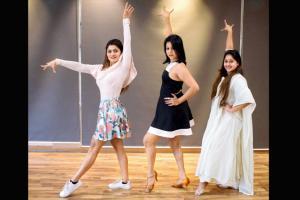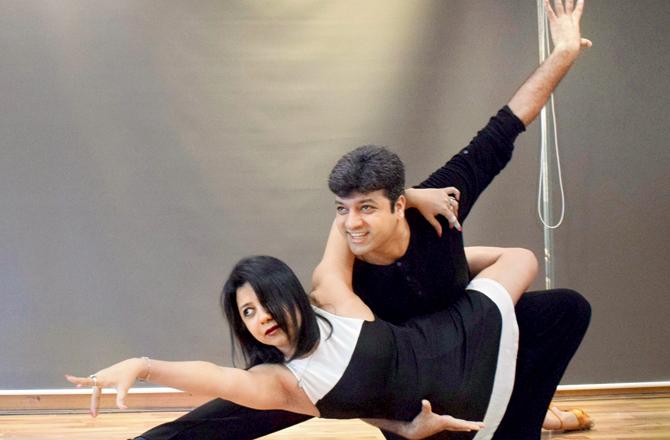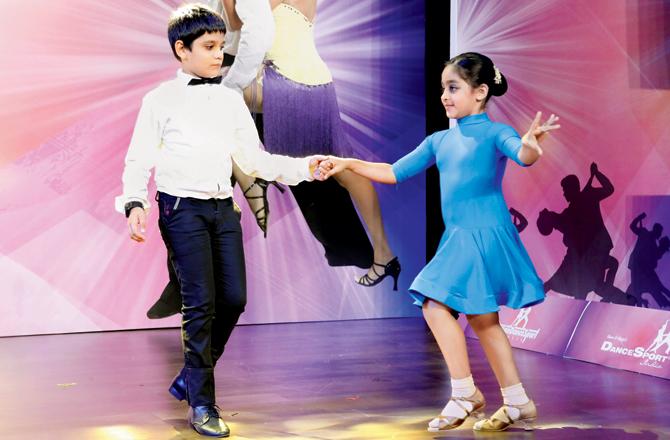Ahead of a Latin Dancesport championship, its judges talk about the genre that goes beyond lifts and moves, and how India fares internationally

Sneh Vadhani, Rajeswari Vaidyanathan and Sneha Kapoor at a Lower Parel dance studio
Six years ago, when Rajeswari Vaidyanathan started her dancesport academy in Mumbai, she would get calls enquiring if she taught Bollywood dance. Today, the callers are armed with a battery of questions about taking bachata or jive lessons under competitive Latin ballroom dancing. This, in a nutshell, is the validation of the journey of the banker-turned-dancesport professional, who shifted her focus from teaching social dancing to competitive Latin dance forms when her interaction with Asia Pacific champions, and international travel revealed a yawning gap between the standards in India and those worldwide.
ADVERTISEMENT
This Monday, 220 participants from Mumbai, Pune, Chennai, Bengaluru, Belgaum and Goa will participate in The 3rd India Open Latin Ballroom DanceSport Championship 2019 — organised by the Indian DanceSport Council under Vaidyanathan's leadership — where they will showcase their skills in cha-cha, rumba, samba, bachata, salsa, Viennese waltz and Argentine tango.

Vaidyanathan with dance partner Shannon Benjamin. Pics/Ashish Raje
"When I started out, the focus here was social dancing-oriented, and remained confined to external factors like looking good when you dance, and the lifts and moves. But you look good because of the use of a specific muscle, and knowing when to engage which muscle lies at the core of dancesport, which requires a lot of training," Vaidyanathan tells us at a dance studio in Lower Parel, where she is joined by salsa professional Sneha Kapoor and trained Latin ballroom dancesport professional Sneh Vadhani. The trio, along with rock 'n' roll and salsa dancer Megha Khatri, and Tanushree Rakshit, founder of a Pune-based dance school, will be judging the championship.
Both Kapoor and Vadhani agree that the scene is changing for the better. "Dancing is no more just a hobby in India. What is important now is to make it a culture, the way it sustains itself across the world," says Vadhani. Kapoor adds, "Students today are knowledgeable, and they will not go back to a class if they feel the teacher is faking it."

The competition is open to all
That said, Vaidyanathan still feels dancesport is at a nascent stage in India. She informs that the categories in the competition have been diversified to promote dancers of different levels and age groups; the competition is open to those from five to 70 years. "There is also a solo category, in case you don't have a partner — we are still a little conservative that way. Solo also helps you improve technically. So, you first work on yourself and then partner up," she explains.
While Kapoor will be looking for technique, timing, knowledge of the dance form and footwork, Vadhani considers musicality a crucial factor. Partner work, or dancing as one entity, is another factor the judges will keep an eye out for. Vaidyanathan, in fact, points to how in certain Latin dance forms, the woman, "despite carrying the burden of swiftness and strength" tends to get overshadowed by the man.
The solution, as Vadhani who teaches the dance forms in Mumbai schools shares, lies in dancesport itself. "The earlier you begin, the better you would be as a social dancer. Bollywood and hip-hop are recital-based forms where you perform to a particular song," she says. "But here, you imbibe other life values like trusting your partner, working as a team, and mutual respect between a boy and a girl."
Know your Latin dance forms
. Cha-cha: A naughty, flirtatious, cheeky dance, moderately fast in tempo.
. Rumba: An elegant dance of love; it involves an advanced level of muscle engagement and control.
. Jive: Full of fun, it is the second fastest in tempo; belongs to the family of rock 'n' roll, and West & East Coast swing.
. Samba: A dance of festivity and carnivals; it is the fastest of the forms and most technically challenging.
. Paso doble: It is based on different body requirements, however, the body isolations and shaping are similar to flamenco. It tells the story of a bull fight.
. Salsa: A club dance form, which is performed mostly socially. It comes from Cuba and has many turn formations.
. Bachata: A club dance form from the Dominican Republic; mostly slower and sensual in nature.
- Inputs by Rajeswari Vaidyanathan
On January 28, 4 pm to 10 pm
At Experimental Theatre, NCPA.
Call 22824567
Entry Rs 1,300
Catch up on all the latest Mumbai news, crime news, current affairs, and also a complete guide on Mumbai from food to things to do and events across the city here. Also download the new mid-day Android and iOS apps to get latest updates
 Subscribe today by clicking the link and stay updated with the latest news!" Click here!
Subscribe today by clicking the link and stay updated with the latest news!" Click here!






